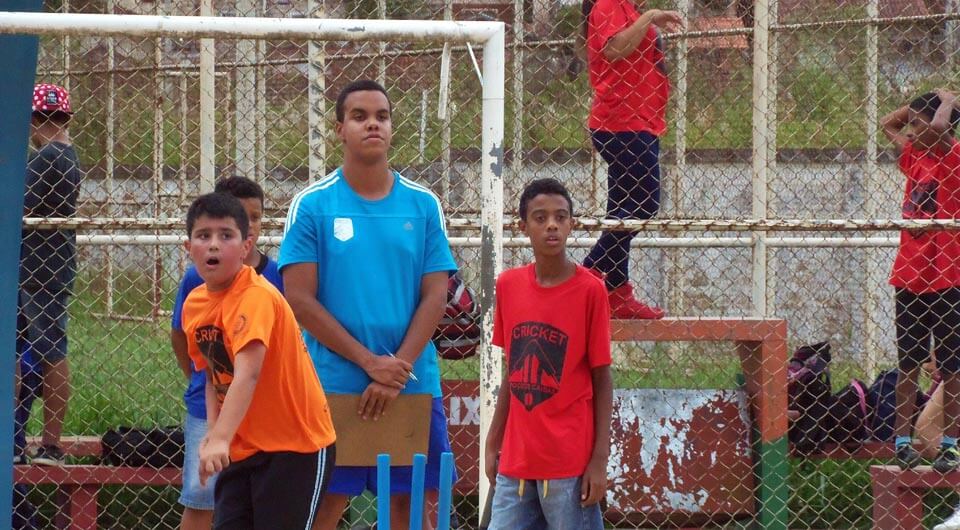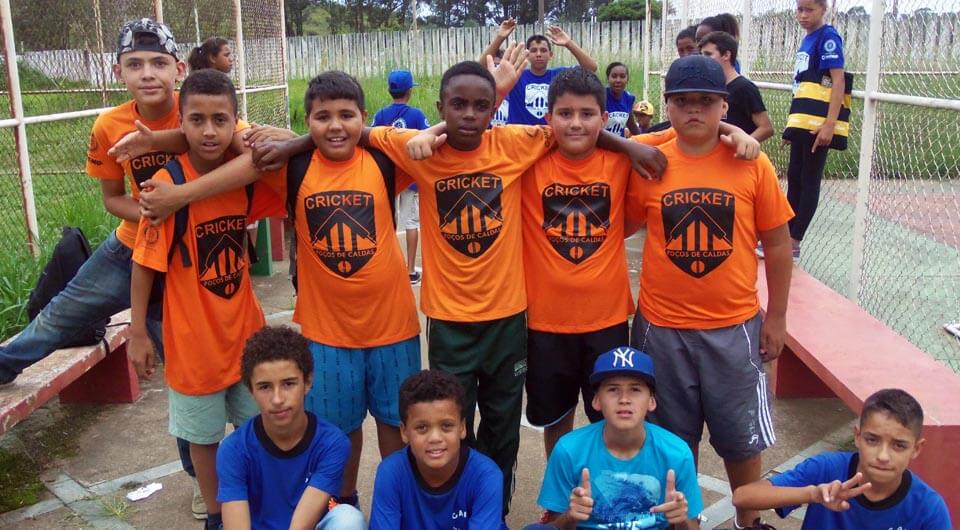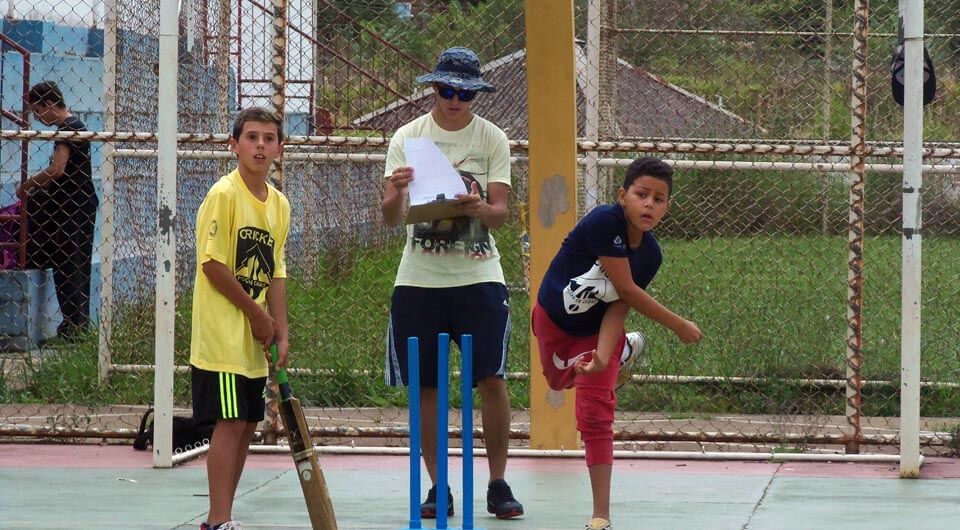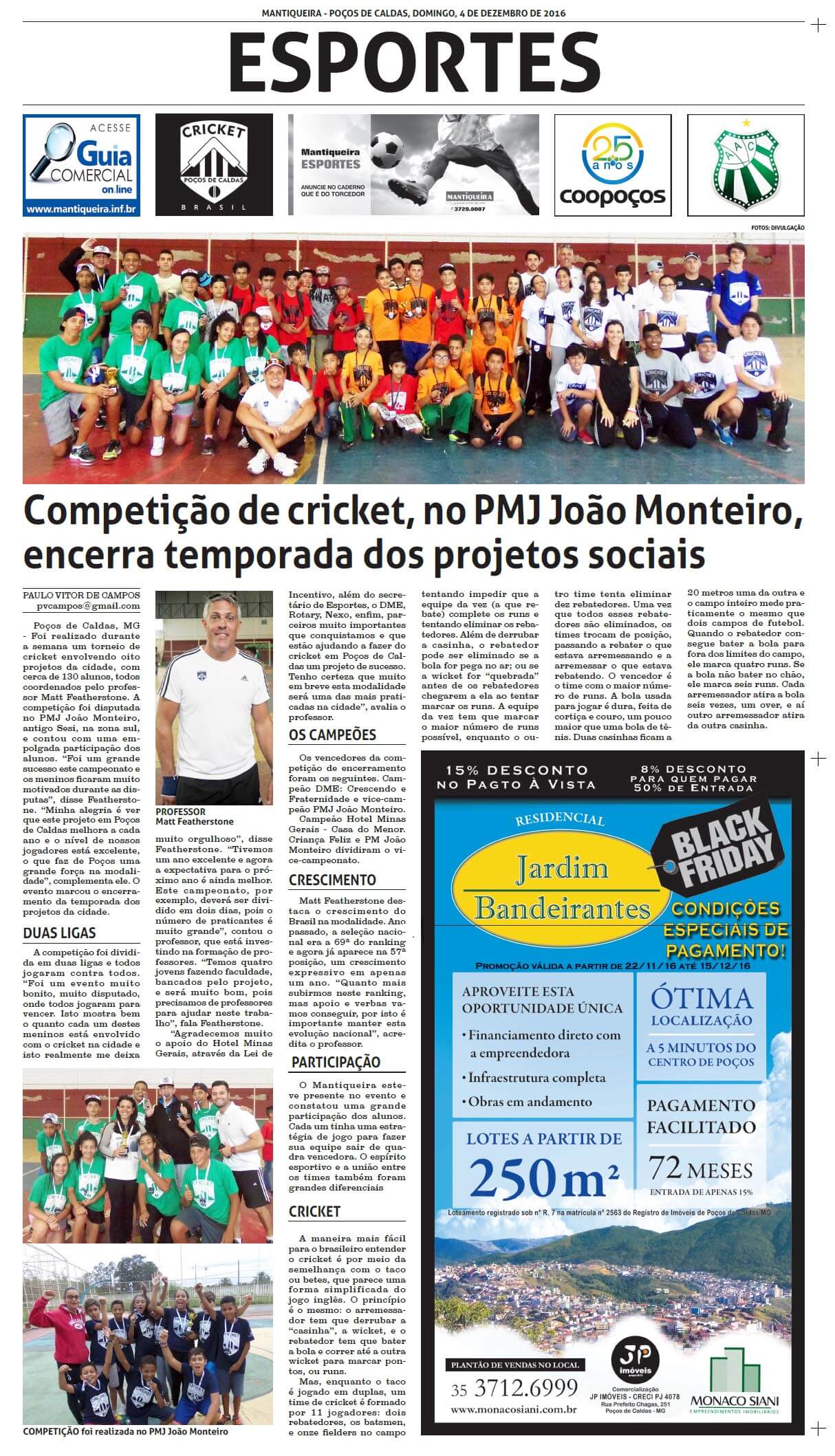Cricket competition ends season of social projects in Poços de Caldas
Text by Paulo Vítor Campos – Sport Poços
Poços de Caldas, MG – A cricket tournament was held during the week involving eight projects from the city, with about 130 students, all coordinated by professor Matt Featherstone. The competition was held at PMJ João Monteiro, formerly Sesi, in the south zone, and had an enthusiastic participation of students. “This championship was a great success and the boys were very motivated during the matches,” said Featherstone. “My joy is to see that this project in Poços de Caldas improves every year and the level of our players is excellent, which makes Poços a great force in the sport”, he adds. The event marked the end of the city’s project season.
Two leagues
The competition was divided into two leagues and everyone played against everyone. “It was a very beautiful event, very disputed, where everyone played to win. This shows how much each of these boys is involved with cricket in the city and it really makes me very proud, ”said Featherstone. “We had an excellent year and now the expectations for next year are even better. This championship, for example, should be divided into two days, as the number of practitioners is very large ”, said the professor, who is investing in the training of teachers. “We have four young people going to college, supported by the project, and it will be very good, because we need teachers to help in this work”, says Featherstone.
“We are very grateful for the support of Hotel Minas Gerais, through the Incentive Law, in addition to the Sports Secretary, DME, Rotary, Nexo, in short, very important partners that we have conquered and that are helping to make cricket in Poços de Caldas a project Of success. I am sure that this modality will soon be one of the most practiced in the city ”, says the professor.
The Champions
The winners of the closing competition were as follows. DME Champion: Crescendo e Fraternidade and PMJ runner-up João Monteiro.
Campeão Hotel Minas Gerais – Casa do Menor. Criança Feliz and PM João Monteiro shared the runner-up.
Growth
Matt Featherstone highlights Brazil’s growth in the sport. Last year, the national team was 69th in the ranking and now appears in the 57th position, an expressive growth in just one year. “The more we rise in this ranking, the more support and funds we will get, so it is important to maintain this national evolution”, believes the professor.
Participation
Mantiqueira was present at the event and found a large participation of students. Each had a game strategy to make their team leave the winning court. The sporting spirit and the unity between the teams were also great differentials
Cricket
The easiest way for the Brazilian to understand cricket is through the resemblance to the bat or betes, which looks like a simplified form of the English game. The principle is the same: the pitcher has to knock down the “little house”, the wicket, and the hitter has to hit the ball and run to the other wicket to score points, or runs.
But, while the bat is played in pairs, a cricket team is made up of 11 players: two batters, the batsmen, and eleven fielders on the field trying to prevent the team of the time (the one batting) from completing the runs and trying to eliminate the hitters. In addition to knocking down the box, the hitter can be eliminated if the ball is caught in the air; or if the wicket is “broken” before the batters reach it when trying to score the runs. The next team has to score as many runs as possible, while the other team tries to eliminate ten hitters. Once all these hitters are eliminated, the teams change positions, starting to hit what they were shooting and to throw what they were hitting. The winner is the team with the most runs. The ball used to play is hard, made of cork and leather, slightly larger than a tennis ball. Two little houses are 20 meters from each other and the entire field measures practically the same as two football fields. When the hitter manages to hit the ball out of bounds, he scores four runs. If the ball does not hit the ground, he scores six runs. Each pitcher throws the ball six times, one over, and then another pitcher shoots from the other box.





